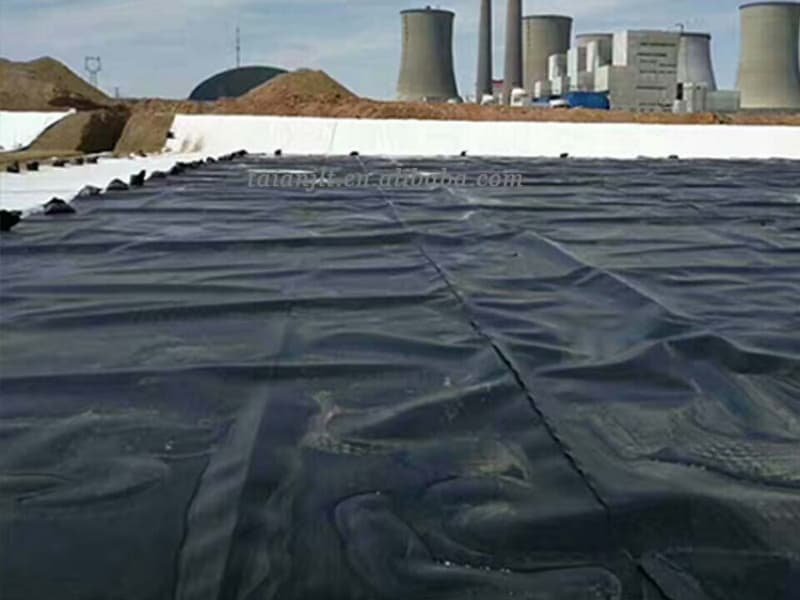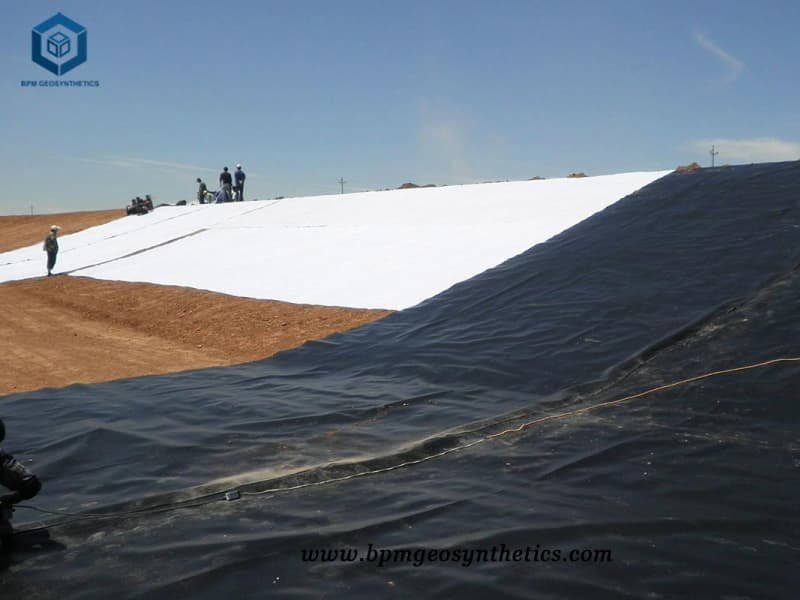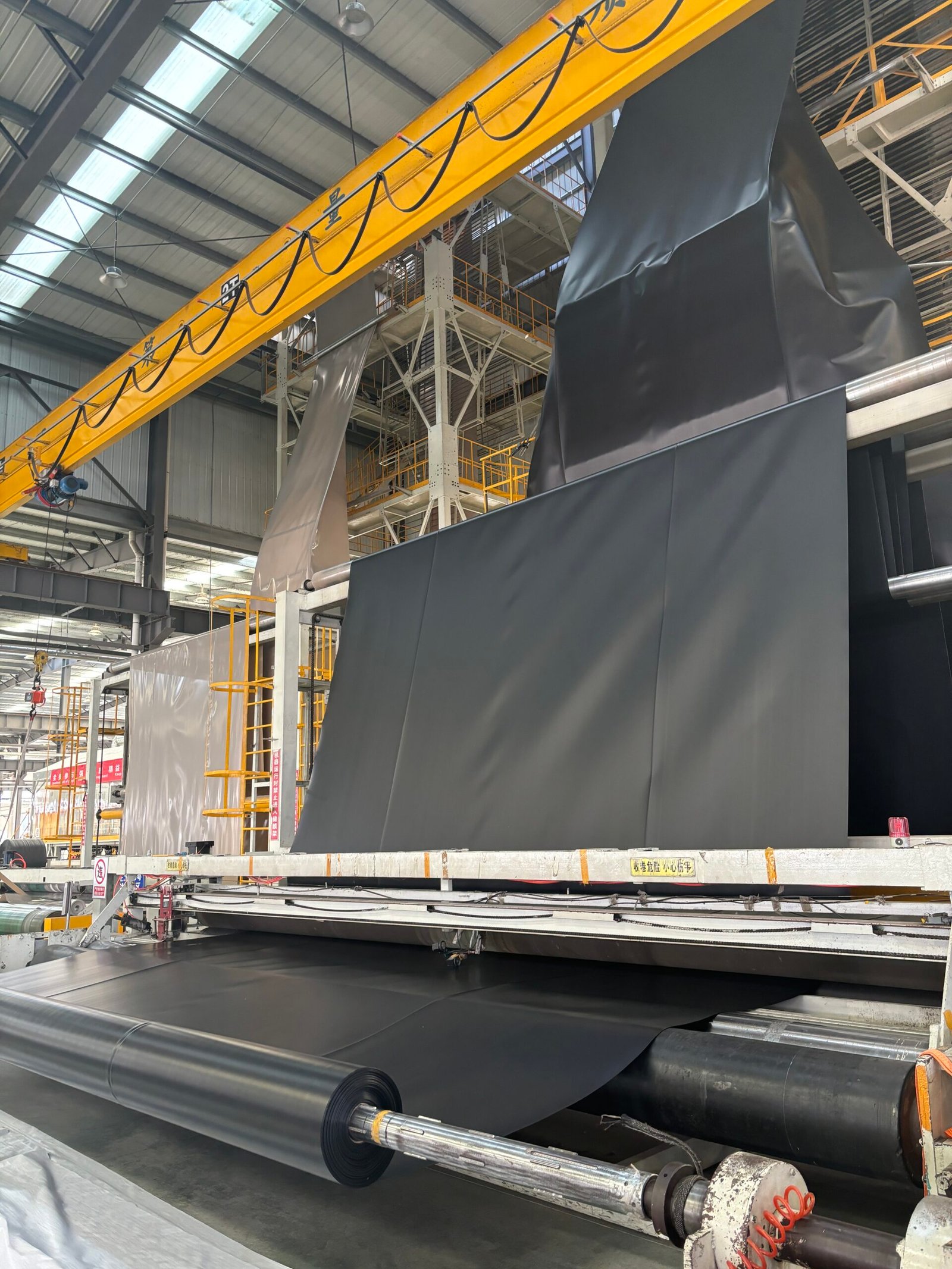In the realm of waste management, landfills rely heavily on containment systems to prevent toxic leachate from contaminating soil and groundwater. Geomembrane, as an impermeable barrier, has become a cornerstone of modern landfill design, valued for its ability to restrict liquid migration. However, despite their widespread use, geomembranes in landfill applications are not without limitations. This article explores the disadvantages of geomembranes for landfills, alongside their core functions and key considerations for selection.

1. What Is a Geomembrane for Landfills?
A geomembrane for landfills is a synthetic membrane made from materials like high-density polyethylene (HDPE), linear low-density polyethylene (LLDPE), or polyvinyl chloride (PVC). Designed to be impermeable, it serves as a critical barrier in landfill liner systems, typically installed above compacted clay layers to enhance containment. These membranes vary in thickness (e.g., 40–100 mils) and texture (smooth or textured) and are manufactured via extrusion processes to meet standards such as GRI-GM13 and ASTM D6349.
In landfills, geomembranes are deployed in primary and secondary liner systems: primary liners directly contain waste and leachate, while secondary liners act as a backup to prevent leaks if the primary system fails.
2. Functions of Geomembranes in Landfills
Geomembrane plays an indispensable role in landfill operations, leveraging their unique properties. They prevent toxic leachate—formed by rainwater mixing with decomposing waste—from seeping into groundwater, ensuring compliance with environmental regulations. Some geomembranes (e.g., HDPE) restrict the migration of landfill gases (methane, carbon dioxide) into the atmosphere or surrounding soil. They withstand the weight of waste layers and heavy equipment, maintaining the integrity of the landfill’s base. By isolating waste from underlying soil, geomembranes prevent soil contamination and preserve ecosystem health.
3. Advantages of Geomembranes for Landfills
Before delving into their drawbacks, it is important to acknowledge the strengths that make geomembranes a preferred choice. Modern geomembranes boast a water resistance rating exceeding 10,000mm, far superior to natural clay liners. Materials like HDPE resist corrosion from acidic or alkaline leachate, ensuring long-term performance. With proper installation, geomembranes can last 20–50 years, reducing the need for frequent replacements. They adapt to various landfill designs, including municipal solid waste (MSW) landfills, hazardous waste sites, and construction debris dumps.

4. Disadvantages of Geomembranes for Landfills
Despite their benefits, geomembranes face significant limitations in landfill environments, driven by the unique challenges of waste containment.
4.1 Limited Flexibility and Conformability
Geomembranes, especially thicker variants (e.g., 80+ mil HDPE), are relatively stiff compared to more flexible materials like LLDPE. Landfills often have uneven subgrades—resulting from soil compaction variations or residual debris—and stiff geomembranes struggle to conform to these irregularities. This can lead to stress concentrations at folds or creases, increasing the risk of cracks over time, and poor contact with the underlying clay layer, creating gaps where leachate could accumulate.
4.2 High Installation Complexity and Costs
Landfill geomembranes require precise installation to ensure integrity, driving up costs. Thicker geomembranes demand professional heat welding (hot wedge or extrusion) to seal seams, as mechanical fasteners risk leaks. Certified crews are essential, and their expertise comes at a premium—especially in remote landfill locations. Subgrades must be meticulously cleared of rocks, roots, and sharp debris to prevent punctures. This adds time and labor costs, particularly for large-scale landfills. Post-installation, seams require rigorous testing (e.g., vacuum or pressure testing) to detect leaks, further increasing project expenses.
4.3 Vulnerability to Punctures and Damage
Landfills pose unique puncture risks. Sharp objects in waste (e.g., metal scraps, glass, construction debris) can pierce geomembranes during landfill operations. Even small punctures, if undetected, can lead to significant leachate leaks over time. Heavy machinery (e.g., bulldozers, compactors) used to spread and compact waste can 碾压 geomembranes, especially in areas where the waste layer is thin. This risk is heightened for thinner geomembranes (40–60 mils).
4.4 Chemical and Biological Degradation
Landfill leachate is a complex mixture of organic compounds, heavy metals, and acids/alkalis, which can degrade geomembranes over time. High concentrations of solvents or oxidizing agents in leachate may weaken the polymer structure of geomembranes, reducing their tensile strength and impermeability. Bacteria in decomposing waste produce enzymes that can break down polymer chains, a process accelerated by warm, moist landfill conditions. This is particularly problematic for geomembranes without antimicrobial additives.
4.5 Thermal Sensitivity
Landfills generate heat through waste decomposition (methanogenesis), with internal temperatures often exceeding 50°C (122°F). Geomembranes expand and contract with temperature fluctuations, leading to seam stress. Thermal expansion can stretch welded seams, causing them to weaken or split. Additionally, cooling after expansion may leave wrinkles, which trap leachate and create localized pressure points.
4.6 Challenges in Maintenance and Repair
Once a landfill is operational, accessing and repairing geomembranes is extremely difficult. Leaks in buried geomembranes are hard to locate without specialized equipment (e.g., electrical leak location systems), and minor leaks may go unnoticed for years. Fixing a puncture or split requires excavating overlying waste layers, which disrupts landfill operations and incurs high costs. For active landfills, this can delay waste disposal schedules.
4.7 High Material and Transportation Costs
Thicker geomembranes (e.g., 80 mil HDPE) offer greater durability but come with higher upfront costs. Thicker membranes cost 20–30% more per square foot than thinner alternatives, a significant burden for large landfills covering hundreds of acres. Geomembranes are transported in large rolls (often 20–25 feet wide), and their weight increases with thickness. This raises transportation costs, especially for landfills in remote areas with limited infrastructure.
5. Key Considerations When Choosing Landfill Geomembranes
To mitigate these disadvantages, landfill operators must weigh several factors. Analyze leachate chemistry to select geomembranes with appropriate chemical resistance (e.g., HDPE for acidic leachate, PVC for certain organic solvents). For large, flat landfills, thicker, stiffer geomembranes may be viable; for uneven or sloped sites, more flexible options (e.g., LLDPE) are preferable. Prioritize manufacturers or contractors with a track record in landfill geomembrane installation, including certifications in welding and leak testing. Invest in monitoring systems (e.g., automated leachate collection sensors) to detect leaks early, reducing repair costs.

6. Conclusion
Geomembrane are vital for landfill containment, but their disadvantages—limited flexibility, high installation costs, vulnerability to damage, and degradation risks—require careful consideration. These drawbacks are amplified in landfill environments, where irregular terrain, harsh leachate, and operational stresses create unique challenges.
By selecting the right geomembrane type, prioritizing expert installation, and implementing robust monitoring, landfill operators can mitigate these limitations. Ultimately, the success of a landfill geomembrane system depends on balancing its strengths against site-specific risks—ensuring long-term environmental protection while managing project costs.



